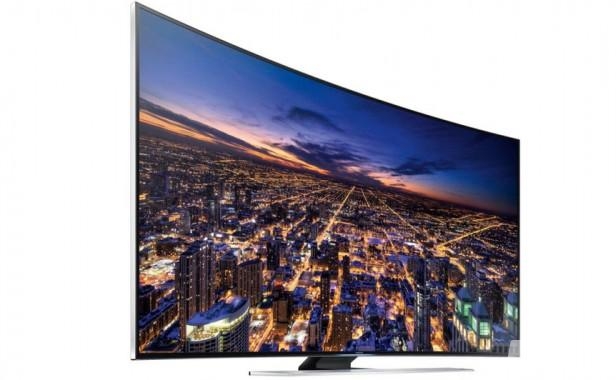
advantage
1. Improve immersion
This is the biggest advantage of curved TV claims. After bending the image forward, the world you watch will have a sense of being wrapped so that you can go deeper into your afterglow and make you deeper into the world you are watching.

People who watch curved TV for the first time will get a similar experience of watching 3D images, even if the video source is only 2D. This is because the curved edges of the image enhance the perception of depth of field.
3. More wide field of vision
Curving the edges of the image will make you think the picture you see is wider than the flat-screen TV. Although there is no difference in screen size between the same size surface and the flat screen TV, the surface of the curved TV does look wider than the flat screen TV.

There is a saying that curved televisions are more able to focus the light coming from the screen into your eyes. As a result, the contrast it presents is 1.5-1.8 times higher than flat-screen televisions.
Although this statement is difficult to quantify objectively, most current curved TVs do perform well in contrast.

The curved screen of the curved TV is said to be closer to the shape of the eyeball, so it can present a more focused and comfortable picture than the flat screen TV. This statement is derived from curved screens used in commercial theaters, which have the curvature that helps the projected images maintain the same brightness.
Samsung took this attitude very seriously. They set the curvature of their own curved TV set to a circle radius of 4200mm, which is suitable for the average television viewing distance of 3.2 meters. However, due to the small screen size of the curved TV, its advantage in this area is not obvious.
Logically speaking, bending the picture should reduce the viewing angle. However, there is a problem in the direction of LCD TVs. The way light passes through the LCD matrix determines that the contrast and saturation will be greatly reduced when viewed from the side.
The curvature of the curved TV can adjust the direction of the emitted light, so even if viewed from the side, you can get excellent color and contrast.
7. Looks cool
For enthusiasts, this is obviously not a reason to buy a curved TV. However, consumers have begun to pay more and more attention to the design of a TV, and it is indeed a matter of face to put a curved TV at home.

1. Reflective
If you have ever played a magic mirror, you will know that this kind of shaped glass will produce strange reflections, and the same applies to curved TVs. If there is anything bright in your room—especially a direct light source facing the TV—its reflection will stretch and distort on the curved screen. If you plan to buy a curved TV, you may need to add additional lighting control elements to your room.
2. Limit the viewing angle
This argument seems to contradict it before, but please be patient.
Although the curvature of a curved television avoids the drop in color and contrast when the flat LCD is viewed off-angle, it inevitably has a negative effect on the geometry of the image.
If the viewing angle is within 35 degrees, this defect will not be obvious. However, once it exceeds 35 degrees, the picture becomes almost unobservable immediately (a close shortening of the picture at the end will appear).
3. Only a fixed position can maximize the benefits
If you want to maximize the immersiveness and depth of field that curved TV brings, you can only sit in the middle of the TV screen while maintaining the best viewing distance from the screen.
But then again, you shouldn't be scared off by this demanding requirement, because 70 degrees of effective viewing arc is enough to provide room for many people to watch. It's just that the best viewing position for a curved TV is quite fixed.
4. The screen must be large enough
The effect of a curved TV is directly linked to the size of its own screen. The advantages of the 55-inch screen are very limited, and the 65-inch screen becomes noticeable. However, to provide sufficient benefits, it is best to go up to 70 inches or more.

5. Wall hanging does not look good
Although Samsung's curved TV does support wall hanging, the effect is not very good. Because the left and right sides project too much forward, curved TV hanging on the wall is very difficult to see.
6. Higher price
Both Samsung and LG admit that it is more difficult to make curved TVs. This is also reflected in the selling price. However, with the gradual popularity of such products, production costs will also decline. This year, Finlux launched a bundle of 55-inch 4K curved TVs priced at only 1,000 pounds (about 9659 yuan).

Should I buy it?
It can be said that curved TV is indeed able to enhance the viewing experience, at least for models 65 inches and above. For this reason, we are also very much looking forward to the arrival of larger-size curved TVs.
Although curved TVs do have their own problems, they do prove that they are not popular gimmicks at the moment. As to whether it should be purchased, it also depends on the consumer's own needs and economic capabilities.